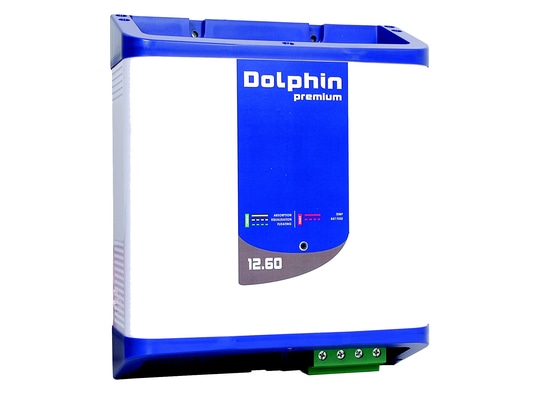
#Industry News
Deep-cycle battery and starting battery : What is the difference ?
An essential element not to be ignored on a boat or a vehicle: the choice of the battery.
Used to start the engine, or to power the electrical operation of onboard equipment (navigation instruments, windlass, navigation lights, refrigerator, pumps, or lighting), the battery is a key element for anyone wishing to safe and long autonomy at sea. There are several types with different characteristics, and their role varies according to your needs. Indeed, depending on the use , you will have to select a service battery or a starting battery.
Starting battery and deep-cycle battery: Battery with different technology and performance
Your battery is what your tank is to your fuel. They store electricity instead of producing it. Electrical energy is retained or released when the chemicals inside the battery undergo a change. Indeed, two different metals, the negative and positive plates, have been previously immersed in an electrolyte liquid, a solution based on water and sulfuric acid. They trigger a chemical reaction that generates the voltage. Even if they have a common operation, batteries come in different forms depending on their use: there is the starter battery and the service battery. The latter, also called deep cycle battery, includes a whole family of batteries with different attributes: solar electric batteries, traction batteries and emergency power batteries.
What is the difference between deep-cycle battery and start battery ?
The starting battery, as its name indicates, is designed to start the engine. To do this, it must be able to deliver a high current for a short period of time (engine start-up phase). In order to obtain this large amount of energy, these batteries are, like those in cars, equipped with a large number of thin plates made of a lead sponge. This provides a very large surface area on which the electrolyte can react, hence the power output. The CCA (cold cranking capacity) in amperes is an essential criterion for defining a starter battery.
The dee-cycle battery, on the other hand, is designed to handle the equipment running on direct current on board the boat. Unlike starter batteries, it is made up of solid, thicker lead plates. The surface area for reacting with the electrolyte is smaller, and the release of current is therefore slower. Therefore, this operation is more suitable for continuous power. It is also designed to be deeply discharged up to 50%. This type of battery is compatible with a solar panel (photovoltaic), an emergency power supply, a motor home or a boat. It is difficult for the same battery to fulfill both roles at the same time (starting the engine and powering the equipment on board).
Identify the boat or vehicle energy needs before purchase
Before purchasing a battery, it is necessary to determine the use you intend to make of it. Indeed, its specification must be in accordance with its role. Although both starter and deep-cycle batteries are made of lead, their use and construction differ in every way. A deep-cycle battery can be used continuously for hours, and recharged over a short period of time. This is called a cycle. This concept is decisive in characterizing the service life of a service battery. This is the opposite of a starter battery, which is designed to deliver a bulk amount of amperage in a short period of time, in order to start an engine. Once it starts, the alternator takes over, and the battery is no longer needed. A deep-cycle battery is not suitable for starting an engine: it does not have the necessary high cranking current. It should not be used for this purpose, as it could cause serious damage to the engine within a short time. For this reason, a car battery is not compatible with the use of solar energy and renewable energies.
How to charge and maintain your battery ?
To take care of your batteries, and to make sure they don't get damaged, it is essential to think about recharging them, especially during the winter period when they remain inactive for a long time. This will prevent self-discharge (approx. 3% per month). A battery that is regularly and correctly recharged can last between 3 and 4 years.
Just like the battery, the choice of the charger depends on your needs. The amperage of the charger, in the first place, must be sized to your battery bank. For this, the charger power must cover between 20% of the capacity (in Ah) of the service batteries. Make sure that the charger is compatible with different types of batteries, especially lithium batteries. Furthermore, it is preferable to choose a charger with a dual output or triple output, in order to be able to supply both a starter and a service battery. Finally, depending on the area where it is installed (in an engine room, battery box or under a bed), it will be necessary to opt for a unit able to comply with environment conditions in a safe a silent way. In general, using a charger in a marine environment requires marine grade electronics in order to resist salt spray.
In this regard, Dolphin Charger designs and manufacture 4 ranges of battery chargers from 10 to 150 amps. Products are can use in different applications on-board for recreational or professional applications. Originally designed for the marine industry, the brand covers the needs in terms of power management, conversion and distribution of pleasure boat applications (sailboat, motorboat, yacht and super yacht), and professional marine. Through the Prolite series, it offers a range of ultra-compact Bluetooth chargers. Easy to install and reliable, they can be quickly installed on all boats with outboard engines (sport fishing boats and other pleasure craft). A solution that can make your life easier! Want to know more? Contact us !




